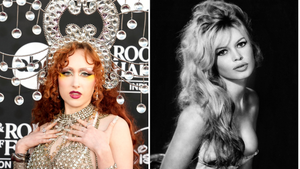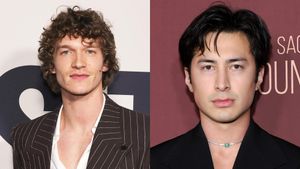Revolutions don't happen overnight. They are fueled by the blood, sweat, and courage of the oppressed, who may toil for decades before real change happens. Successes aren't always apparent until decades later when younger generations, standing on the shoulders of those who came before, can take for granted the changes that occured. In the 1960s and '70s, America's youth rebellions coalesced and an intersection of movements -- civil rights, the sexual revolution, women's rights, and LGBTQ liberation -- either emerged or matured during this time period.
Culturally folks like David Bowie, Sylvester, and Grace Jones shook the boundaries of gender in ways that still reverberate today. It was certainly an important time full of new ideas, frontiers, and madness. And in the middle of it all was Victoria Cruz, where New York City her playground, and the Village, her queendom. A contemporary of trans activists Marsha P. Johnson and Sylvia Rivera, all three were reportedly present during the Stonewall Riots, which marked a new direction for Cruz personally. She quickly became one of the city's brightest queer and trans public figures during the following decades.
Never in the closet, but rather, Cruz quips, in a "gilded armoir," she was one of 11 children. She was born in Puerto Rico, assigned male at birth, and raised in Brooklyn's Red Hook neighborhood.
Cruz started her transition in the 1960s when still in high school -- at an all-boys school. She started growing her hair long, and dying it "whatever color" she wanted, during a time when it was still possible to be arrested for cross-gender dressing or hair styles.
"I used to sell shopping bags because I wanted a pair of Buster Browns," Cruz remembers of the popular shoes. "There were so many kids in my family, my father bought us boots. Those combat boots with the tags in the front and the back. I hated them, so I told him I wanted some Buster Browns, he says, 'Well, you have to make your own money.' So, I started selling shopping bags and shining shoes till I bought me the Buster Brown shoes. And instead of putting a penny on it, I put a new shiny dime."
Eventually she found herself shining shoes at the Trinity Church on Wall Street, but after she got breast implants, she was "chased out." Literally. "We used to run [from police] in the Village," she says. "We would walk down the Village and the cops would come over to us and say, 'Hey, you wanna see my night stick?' And I would yell out, 'No. You want to see mine?' 'What are you, a wise guy?'"
While police brutality is now illegal (though we all know it still happens to people of color at disproportionate rates -- and even with video the police are rarely prosecuted), Cruz explains that back then the only option "was to run." One day, Cruz recalls running into Marsha P. Johnson on the north side of Washington Square Park where Johnson was selling knick-knacks. Their friendship bloomed and lasted until Johnson's untimely death in 1992. Although the police initially ruled Johnson's drowning death a suicide, Cruz never accepted that explanation and conducted her own investigation, which was featured in David France's 2017 documentary The Death and Life of Marsha P. Johnson.
(The New York police reopened Johnson's death as a possible homicide in 2012, though the case remains unsolved.)
Cruz still remembers the last conversation she ever had with Johnson.
"I used to go to St. Vincent's on my lunch hour...and I would see her," she says. "She called to me, 'Victoria, come here.' And she always called me Dickie, you know, so when she said, 'Victoria come here,' I knew that she meant business. I sat down, and she looked at me. She said, 'Try to keep the community together because we are our own worst enemy. And there's power in numbers.' And then she said, 'The world will come up to try to divide us, and when you divide a community, you conquer it. So try to keep the community together.'"
Cruz took that direction to heart and has continued to lead. Despite decades of progress, Cruz says LGBTQ youth are still struggling with the same issues: "A roof over your head, jobs. It's the same deal. It's still happening. I love young people because they ask questions. I let them know that I'm there to help them and teach them, if they're willing to learn."
Cruz's work continues to impact queer and trans lives, reminding us of progress and pitfalls towards full equality and acceptance.
Her legacy cemented long ago, Cruz knows the future is bigger than she can ever envision.
"I'm optimistic and I'm hopeful that it will change for the better," she says. "There's power in numbers. If we unite and keep united, we can make the future different, and what we want it to be. By galvanizing one another, we galvanize each other. And with the same frame of mind, the same frame of thought, we can change what's happening."




































































Charlie Kirk DID say stoning gay people was the 'perfect law' — and these other heinous quotes